What is ampelous diastia and how to grow it?
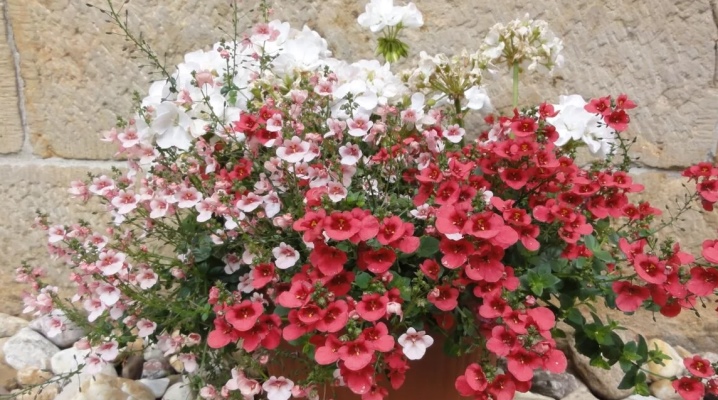
Ampelny diastia is a representative of the norichnikov family. This unique flower came to the territory of the Russian Federation from South African latitudes. Nowadays, such annual flowers are successfully decorated with plots, apartments, terraces, balconies, loggias and verandas in almost all regions, including, for example, Siberia. The main advantages of diastia are unpretentiousness and ease of care against the background of lush and long flowering.
general description
Diascia is a member of a family of 68 plant species. It includes annual and stolonic perennial, evergreen and semi-deciduous representatives of the South African flora. Moreover, they were all able to get more than widespread in European gardening, having won an army of fans.
The described representative of the genus has three types of stems: lodging, creeping and upright. In their natural environment, diastia bushes can grow up to a meter in height. At the same time, growth, as a rule, does not exceed 35 cm (individual stems are able to stretch up to 0.6 m).
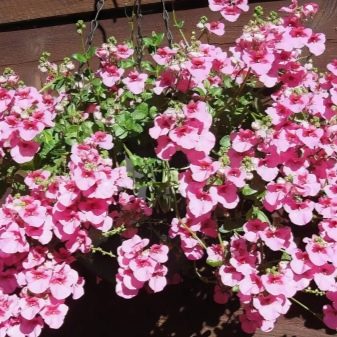
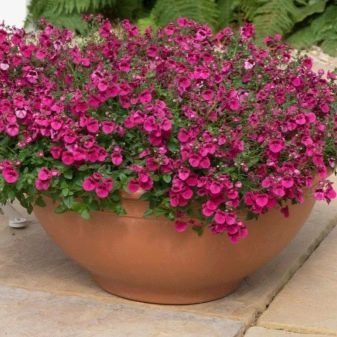
And also a number of important points should be attributed to the key features.
-
Sheet plates - green, small, elliptical, sessile, serrated.
-
Flowers - tubular, have 5-lobe perianths (2 upper ones with yellow segments and 3 lower larger lobes), form an apical raceme and can be of different shades (white, pinkish, salmon, purple, orange, and others).
-
Bloom - from the beginning of the first summer month until the first frost.
-
Some varieties have good cold resistance and are able to withstand temperatures as low as -15 degrees.
Most often, when growing the described flowers in the open field, mixborders and rock gardens are used. In a similar way, the spaces between different large representatives of the flora are effectively filled. Often, diastia bushes are planted along the paths and around the perimeter of the sites.
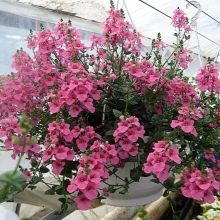

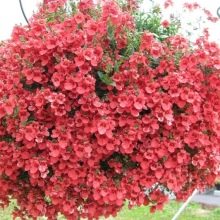
Types and varieties
Among all the variety of types of ampelous diassion that exist today, it is worth highlighting the most common. According to current statistics, modern gardeners often prefer several varieties.
-
Vigilant - a variety that has elongated, hanging stems and pink buds.
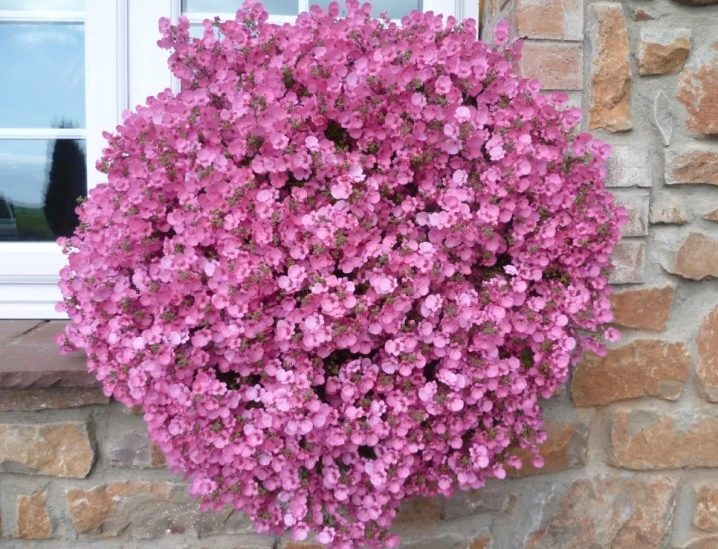
- Felted - in the open field blooms profusely throughout the season. At the same time, it is worth highlighting the unusual shape and wide palette of shades of the flowers themselves. Another important feature is the glossy foliage, which provides the bushes with decorative properties even without flowering.
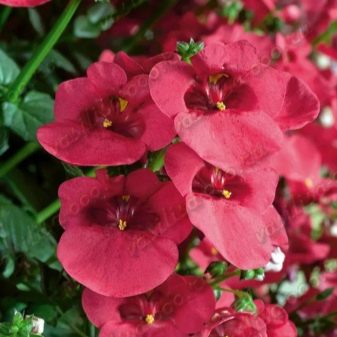
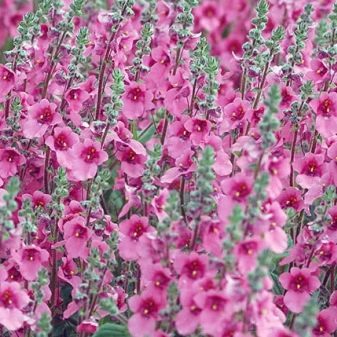
- Elegant - has miniature leaf plates that become almost invisible under pink flowers.
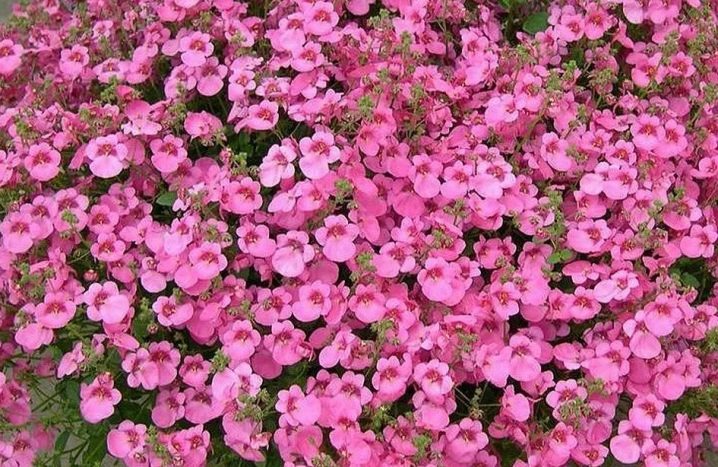
- Bearded - a variety that differs from others in compactness, as well as lush flowers of different shades.

In addition to the listed species, you can also give a list of varieties that are distinguished by outstanding decorative qualities and are widely used in decorating garden plots and premises.
-
"The Pink Queen" - a unique type of diastia, which is distinguished by a bronze edging of pale pink buds.
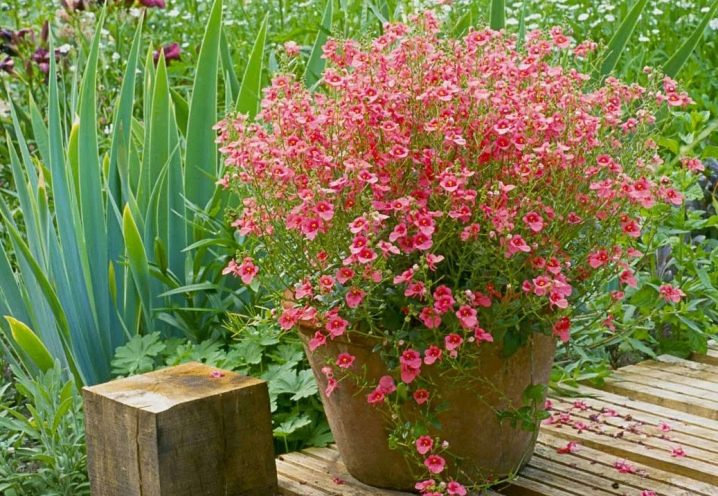
- Lavender pink - a type that gardeners especially appreciate for its increased resistance to sudden changes in weather conditions and temperature fluctuations.Another indisputable advantage is that this diastia pleases the eye with lilac-pink flowers longer than all its relatives.

- "White magic" - the variety that blooms earlier than others.
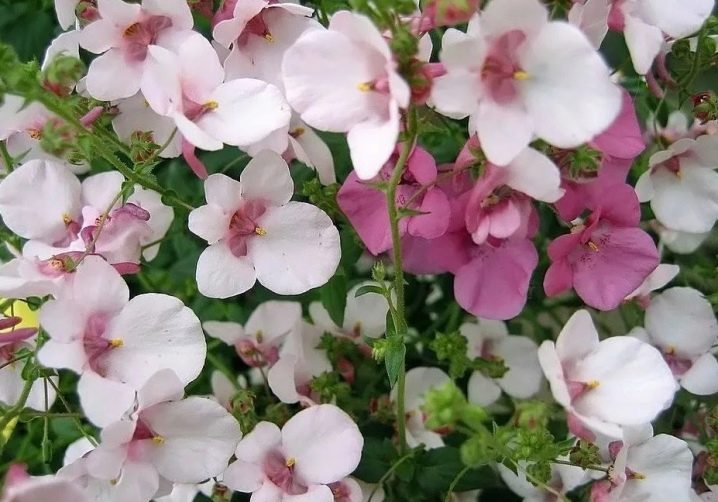
- Blackthorn apricot - the main feature of the species is expressed in the presence of peculiar spurs in apricot or salmon flowers, which are located on thick, but at the same time flexible stems.
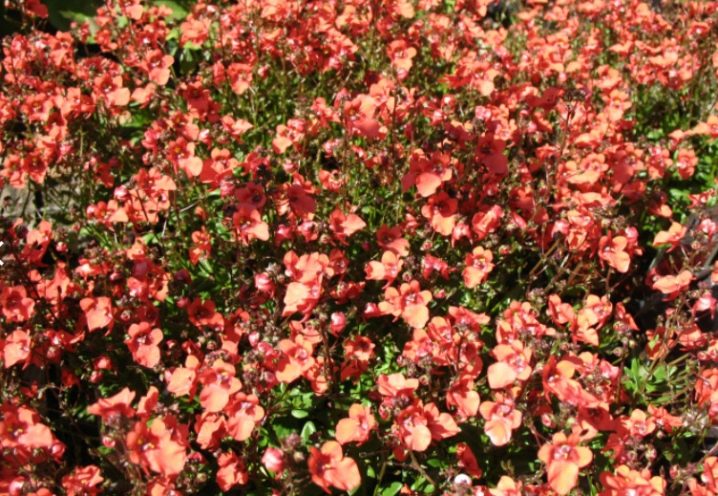
- Diamond coral rose - a representative of a group of early flowering species. The relatively small bushes during the flowering period are decorated with pink-crimson buds.

- "Basya" - a species whose representatives in the season are covered with velvet, 2-centimeter buds, which have a rich pink color.
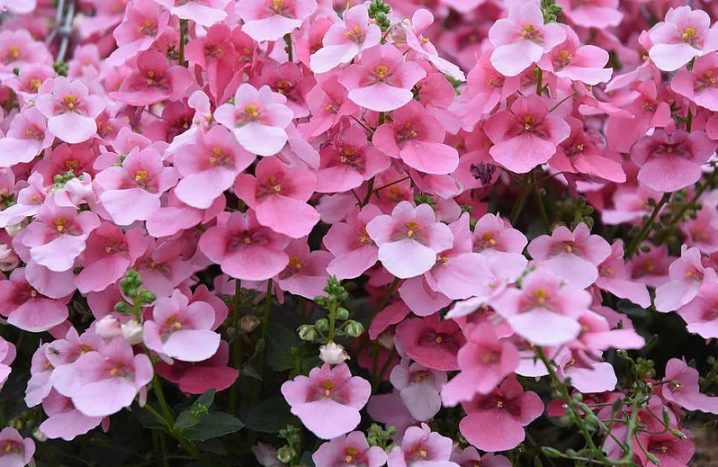
- Ruby Field - a variety characterized by pink flowers with a dark center.
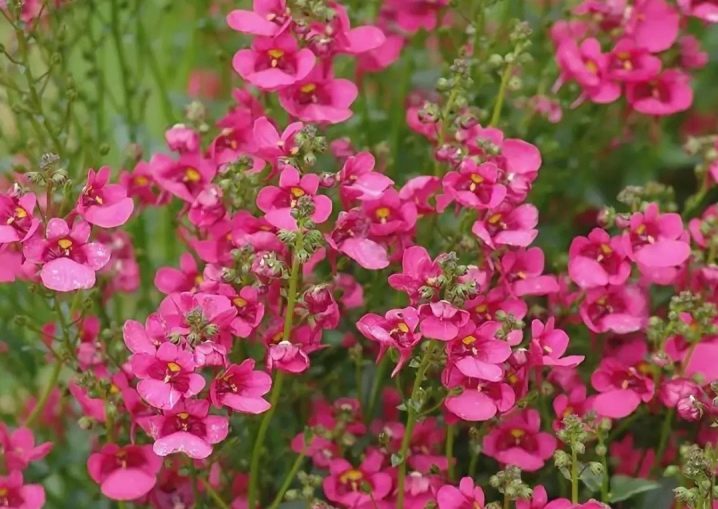
- "Barbers" - a shrub that blooms pink buds twice in the entire season.
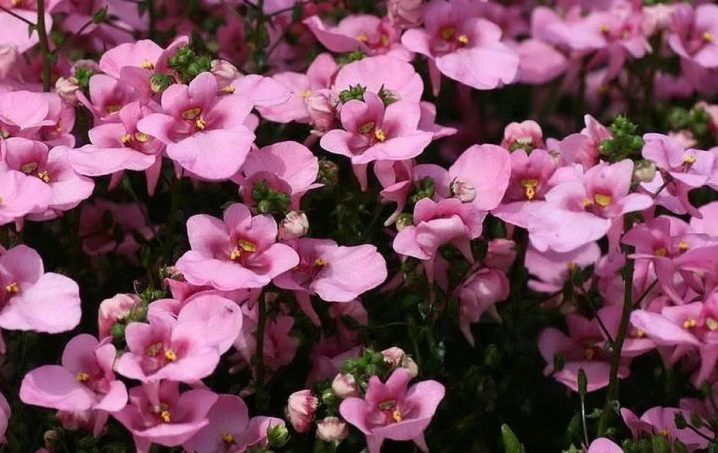
Planting and transplanting
Initially, it is important to note that planting of seedlings should be carried out only after the soil is sufficiently heated. If there is even a minimal likelihood that cold snaps may return, then a rational solution would be to postpone the implementation of the event to a later date. In the overwhelming majority of cases, the landing is carried out from 16 to 30 May. Competent and timely preparation will minimize the risk of stress for young stock and more mature plants during transplantation.
And we are talking, in particular, about the hardening of seedlings, which are regularly taken out into the street. The ideal option is when the duration of such sessions reaches 24 hours.
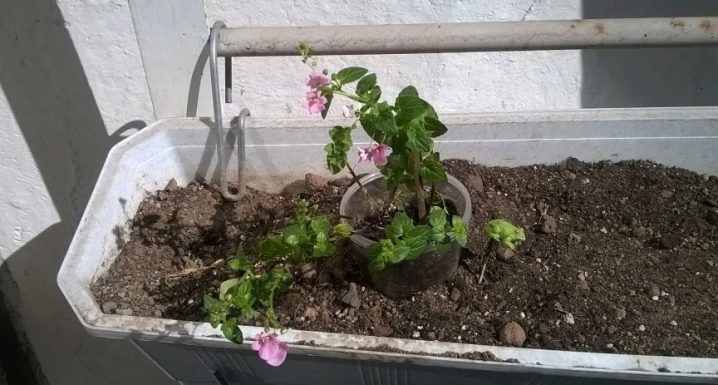
It is strongly recommended to plant bushes, regardless of the type, in areas that are fully illuminated and protected from drafts. Moreover, they should not be located in lowlands, since stagnant water is destructive. It is desirable that the soil has low acidity and a relatively low nutrient content. Experienced gardeners advise adding sand to the soil mixture, which, in turn, has a beneficial effect on the growth and development of diastia.
When planting, it is necessary to place seedlings at intervals of 15 cm. The final stage of the whole process will be abundant watering of the young. It is important to note that when growing flowers not on the site, but at home, the principles of action will be similar. This primarily concerns the requirements for the soil used. The best option for the mixture is garden and leaf soil, as well as peat and coarse sand in equal parts.

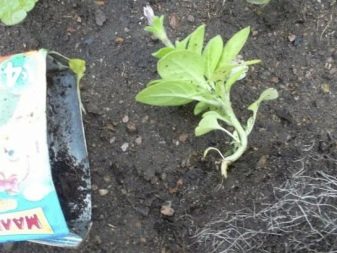
Care
When growing diastia in summer cottages and household plots, the traditional agrotechnical measures for the family will be relevant. It is important to take into account the characteristics of the plant. For example, loosening the soil and removing weeds after each watering should be mandatory.
If the flower is grown at home, then you should remember about especially important nuances. Already in seedling age, the stems of the ampelous diassion become straight, like those of a bush. However, when they grow to about 30 cm, they sink.
And also do not forget that there must be a drainage layer in pots and baskets.
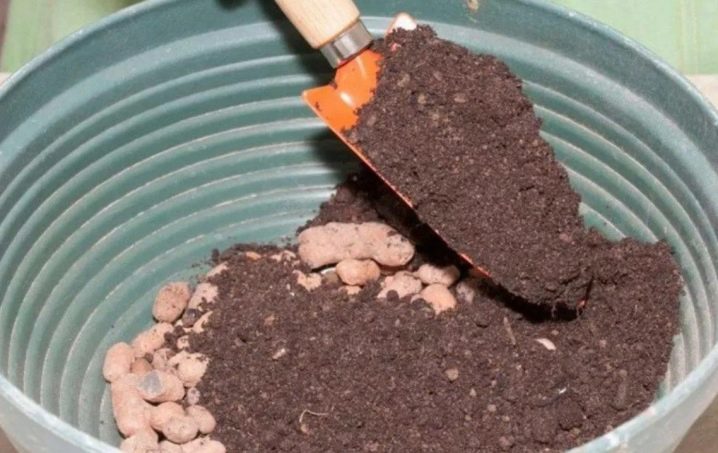
Watering and feeding
Excessive irrigation is only acceptable in extreme heat. It is important to remember that during periods of active flowering, the need for a large amount of moisture increases dramatically. At the same time, the guarantee of the health of diastia will be the absence of its stagnation in the zone of the root system. To prevent rapid evaporation, the soil should be loosened well after watering, but carefully.
Fertilizers are applied, as a rule, once a month. At the same time, the recommended dressings are mineral complexes oriented towards flowering plants. It is important to prepare solutions with a low concentration of the main ingredients.
By the way, a flower is able to demonstrate a negative reaction to an excess of fertilizer and not give buds.
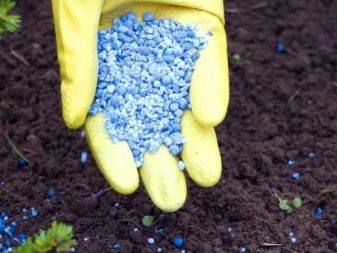

Pruning
Timely and competent removal of wilted flowers will guarantee abundant and long-lasting flowering. Experienced gardeners, after completing the first wave, cut the bushes in half. Moreover, they must be well watered and fertilizers must be applied. Such agrotechnical measures can effectively stimulate the formation of new buds and stem growth.
In the overwhelming majority of cases, in late autumn, after the complete flowering, the bushes are dug up and thrown away. However, some gardeners carry out a second pruning and move the bushes indoors.
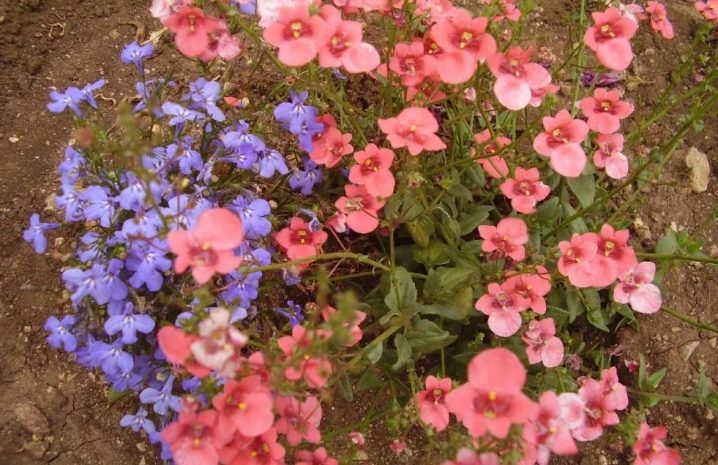
Wintering
As already noted, in our area, ampelous diastia is an annual plant. However, with the right approach, you can help him over the winter. This will require:
-
carefully remove the bush;
-
transplant it into a container of appropriate size with loose and nutritious soil;
-
place in a room at temperatures up to +10 degrees.
It is important to consider that in such a situation, maximum light is required. Watering is carried out at intervals from 10 days to 2 weeks. In March, pruning is carried out, leaving no more than 10 cm, and after competent hardening, the bushes are returned to their place.
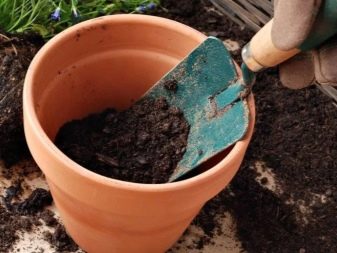
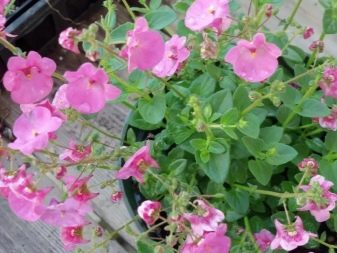
Reproduction
Diastia of any kind is grown by seedlings from seeds or cuttings. In the first case, special attention is paid to the preparation of the substrate at the end of February. If cassettes are used, loose soil will be required. In this case, 3 units of seed are placed in each cell. In situations with wide bowls, the seeds are combined with sand and the resulting mixture is sown.
It is important at the final stage to cover the plantings with film or glass. For the rapid emergence of strong shoots, it is necessary to provide appropriate conditions. The temperature should be at 18-20 degrees. If everything is done correctly, the first shoots will appear within 10-15 days after sowing. This will be a signal that the plants need to be moved to a room with a temperature of no higher than 10-15 degrees.
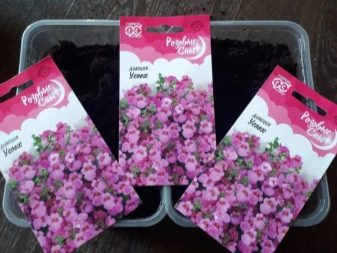
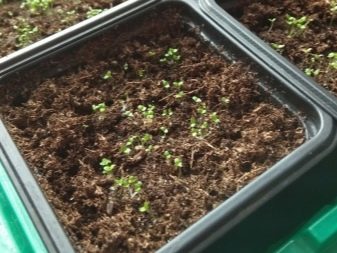
It is important to regularly check the condition of the soil, which should not be waterlogged or excessively dry. It is recommended to irrigate immature sprouts using a spray bottle. When growing seedlings in bowls, 2 weeks after germination, a pick will be required. Experienced gardeners practice periodic pinching of the tops of the shoots in order to ensure active development.
And also the described flowers are propagated by rooting cuttings. An adult strong bush is used as a donor, from which the future planting material 7-9 cm long is separated. The seedlings are placed in containers with a soil mixture of sand and garden soil (ratio 2 to 3), and in May they are already transferred to a permanent place. With the initial use of cuttings without roots, the described activities are performed towards the end of summer.
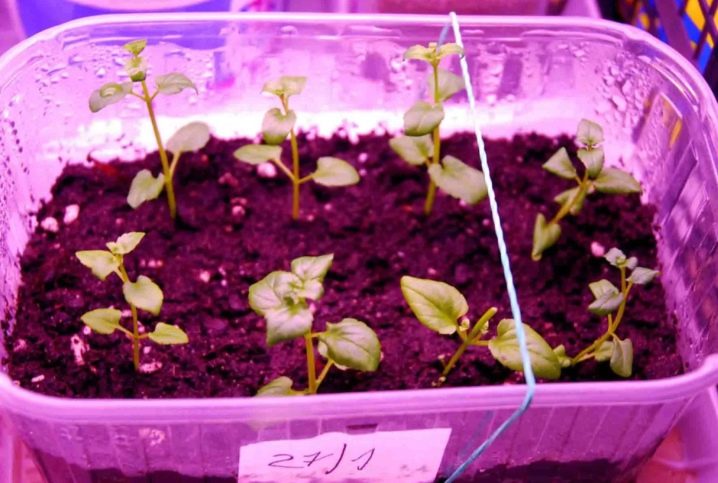
Diseases and pests
One of the important features of this plant is its increased resistance to infections. However, violation of the elementary rules for growing a flower is guaranteed to have negative consequences. The most common problem is moisture stagnation leading to root and / or stem rot.
As practice shows, most often diastia is attacked by slugs and snails. This trouble is most relevant for stems creeping along the ground. You can fight them both with modern drugs and folk remedies.
To prevent problems, it is advisable to raise bushes.
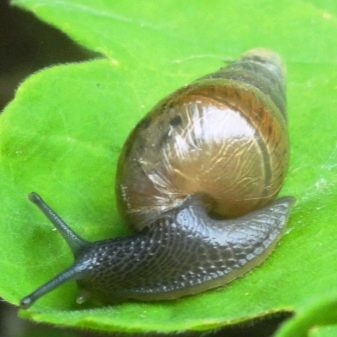
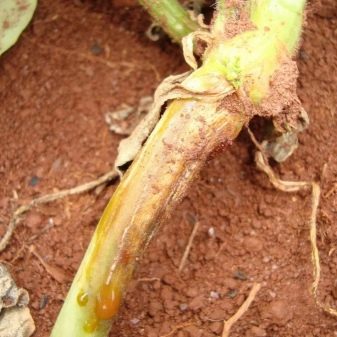
Use in landscape design
When thinking about growing diastia, it is worthwhile to think in advance where this flower could fully manifest its outstanding decorative properties. The simplest solution, of course, will be to decorate flower beds and flower beds with it of various shapes. In addition, low and dense bushes look spectacular when decorating landscape design elements such as alpine slides.
Separately, it is worth noting the creeping species of the plant in question. These varieties are best planted in garden pots, baskets, and flowerpots. It is with this approach that the diastia will appear in all its glory and will be able to demonstrate its sophistication.
In practice, many designers have successfully used upright varieties as low curbs. As a rule, we are talking about the zoning of the plots to be drawn up. Likewise, you can successfully identify places for growing different types of flowers, as well as designate the pool, barbecue and recreation areas.
If normal conditions are provided, then diastia will delight with its appearance both during single landings and as an element of all kinds of compositions.
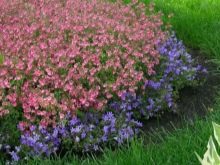

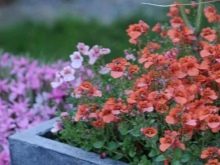































The comment was sent successfully.